Excerpts from Jim Conrad's
Naturalist Newsletter
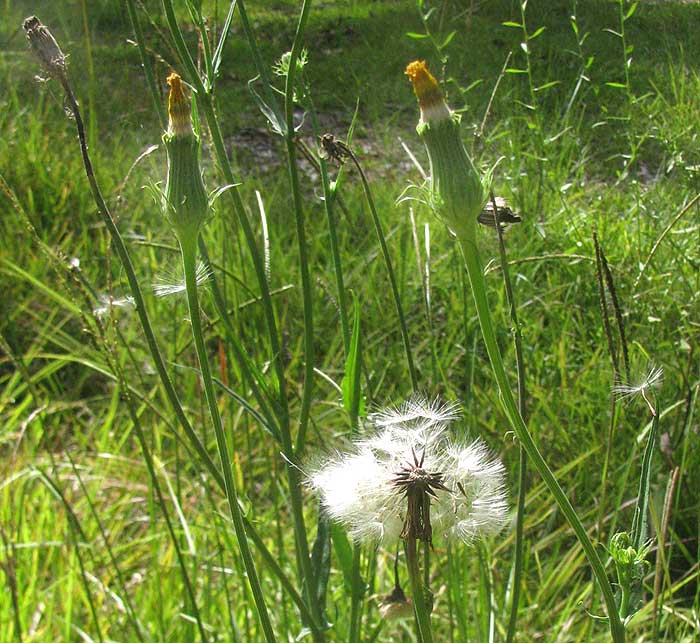
from the the July 8, 2012 Newsletter issued from the woods of the Loess Hill Region a few miles east of Natchez, Mississippi, USA
FALSE DANDELIONS
For about a month some yellow-blossomed, white-puffball-producing wildflowers have been gracing the seldom-mowed orchard. They'd remind anyone of Dandelions, but they're far too large, over knee high, and their flowering and fruiting heads arise on branching, leafy stems, not on leafless, cylindrical little "peduncles" the way Dandelions do. A typical view of some closed flower heads and a puffball-like fruiting head is shown above. A close-up of a fruiting head in the process of dispersing its white-parachuted, achene-type fruits, very much like a Dandelion, is shown below:
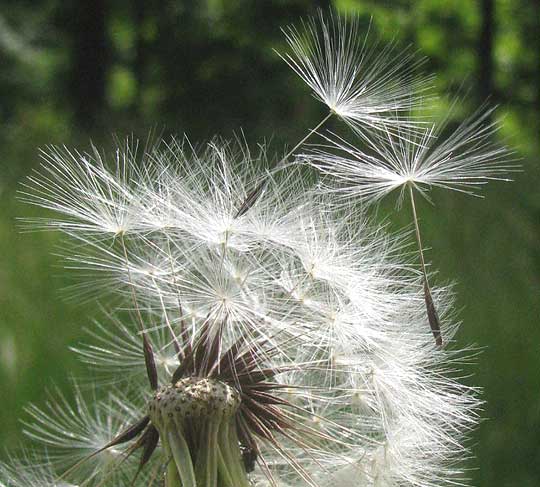
A flowering head, also very much like a Dandelion, is shown below:
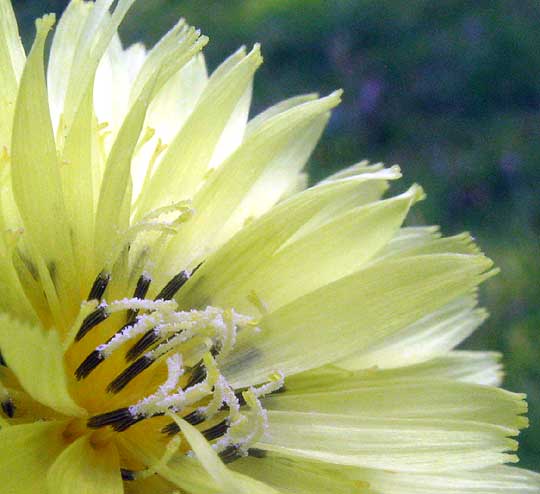
This being in the Composite Family, each of those many flattish, yellow, strap-shaped items is the corolla of a "ray flower." Notice that each corolla tip bears five little teeth. These teeth represent the five petals or corolla lobes of typical non-Composite blossoms. The slender, dark items are the flower's five pollen-producing anthers grown together along their common margins, forming cylinders around each flower's slender style (ovary neck). Each style is tipped with a Y-shaped stigma -- nice and fuzzy for grabbing onto pollen grains, which are supposed to germinate there. A flower head broken open to show individual ray flowers packed next to one another is shown below:
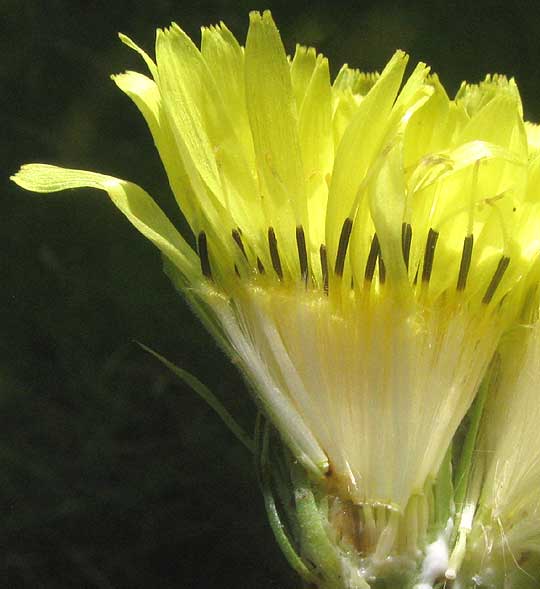
In that shot, below the dark anthers the corollas are mostly hidden by many very slender, stiff, white hairs. These hairs encircle the corolla bases and arise atop white, slender-necked, future achene-fruits at the base of each corolla. The collection of hairs arising atop an achene-type fruit is known as the pappus. When the flowers are pollinated the heads will close up as shown in the first picture, the fruits will enlarge, the slender necks atop the achenes will elongate tremendously as the corollas fall away, and the pappi will form the white parachutes atop each achene in the puffball-like head.
Also similar to a Dandelion who produces all of its leaves in a rosette at the base, most of this plant's leaves also arise at the base, as shown below:
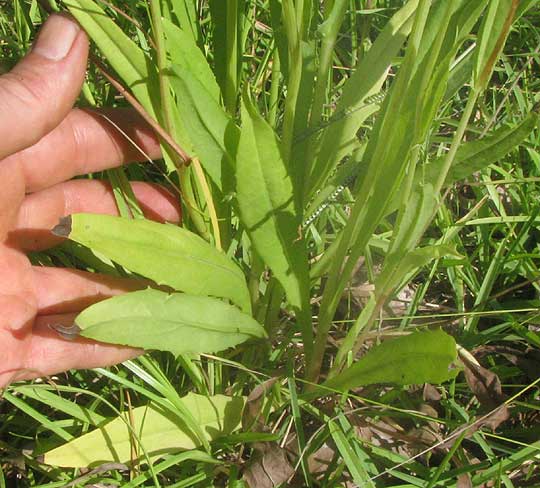
So, one name for this pretty plant naturally is False Dandelion. However, editors seem to agree on the injustice in calling such a pretty plant "false" so probably the most commonly used English name is Carolina Desert-Chicory, though that's a clumsy name and one wonders about the desert and Chicory parts. Fact is, no good name has been settled on for this common, conspicuous wildflower. It's PYRRHOPAPPUS CAROLINIANUS, the "pyrrho" referring to "fire," as in pyromaniac, and "pappus" referring to the white hairs. "Fire-pappus" or "Fire-fluff" -- easily understandable when you see the puffball-like heads in morning sunlight.
Indigenous Americans traditionally ate the taproots, and some people say the leaves can be eaten raw or cooked, though I find them a bit bitter and tough.
Pyrrhopappus carolinianus is native mainly to the Southeastern US, though it's found as far north as Pennsylvania and Nebraska